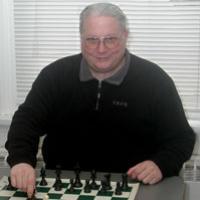
Opocensky’s Math: Minority Attack + Exchange Sac = Majority Attack
Karel Opocensky was born February 7, 1892 in Most, Bohemia and died November 16, 1975 in Prague, Czechoslovakia. My databases show his games from 1912 to 1972. In that long career, Opocensky won the championship of Czechoslovakia four times in 1927, 1928, 1938, and 1944. The last, in 1944, was called the Bohemia and Moravia Championship due to German control. Politics was also a factor during the Olympiad in Buenos Aires, Argentina in 1939 when World War II began. Opocensky and two other players on the Bohemia and Moravia team returned home while two others remained in South America. In 1950, Opocensky was given the IM title. In 1951, he became an International Arbiter. He was the chief arbiter in the 1951 World Championship, the 1951 Helsinki Olympiad, the 1953 Zurich Candidates Tournament, and the 1954 World Championship. Two opening variations named after Opocensky coincidentally feature moves of each of white’s bishops on move six. In the Gruenfeld Defense after 1.d4 Nf6 2.c4 g6 3.Nc3 d5 4.e3 Bg7 5.Nf3 0-0, the queen’s bishop is moved with 6.Bd2. In the Sicilian Defense, Najdorf Variation after 1.e4 c5 2.Nf3 d6 3.d4 cxd4 4.Nxd4 Nf6 5.Nc3 a6, the king’s bishop is moved also just one square with 6.Be2.
In the game presented, Opocensky is White and the opening is the Queen’s Gambit Declined. Opocensky selects the Exchange Variation. The exchange on d5 with cxd5 answered by exd5 allows Black to develop the often problematic queen’s bishop. In the particular move order of this game, Black has already played Nbd7 before the exchange of pawns. This requires moving that knight before the bishop can move on the c8-h3 diagonal. However, Nf8 is available and good. The major theme in the Exchange Variation for White is to conduct a minority attack by getting a pawn to b5. White uses the two white queenside pawns to attack the three black queenside pawns with the object of creating weak pawns, weak squares, and open files. This is what was played in the game. Black’s corresponding plan to use a kingside minority attack and place a pawn on f4 did not develop in this game. Another plan for White in the Exchange Variation is to play pawn to e4 either with the pieces as developed in this game or with moves such as Nge2, Bf4, 0-0-0, Re1, and f3.
As the game developed, Opocensky won the weak pawn on c6 and later sacrificed the exchange. With the initiative, Opocensky besieged the castle with a horse and a majority of infantry. I was impressed that Opocensky’s sacrifice was not analyzed by Fritz or Rybka until I presented it to them. Today, a player who plays such a move over-the-board can be accused of being below the level of strength to do so and as a result also accused of cheating. Yet, if the engines do not find the move, the notion that the move is what an engine would play and is therefore an indication of cheating would not be confirmed.






